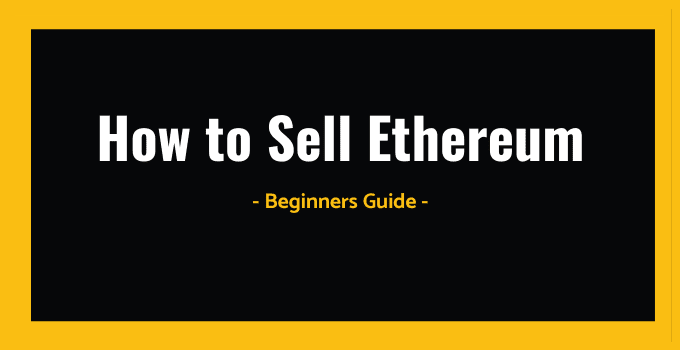So, if you don’t intend on being an active user of Ethereum, chances are you have purchased Ether as an investment with an intention to offload it at some point in the near future. This handy guide will cover the various ways of selling Ether and touch upon some trading strategies.
Cryptocurrency Exchanges
The process of selling Ether on an exchange works similarly to buying it. First of all, you need to choose an exchange that operates within your jurisdiction and trades Ether and set up an account with it. In order to be able to sell, you will be required to connect your existing bank account and provide some additional information, e.g., your date of birth, country of residence and phone number.
Once you’re all set up, you will need to choose whether to sell your Ether for fiat currency or trade it for a different cryptocurrency.
Most major exchanges offer wallet services. Simply navigate the website in search of a ‘sell,’ ‘deposit’ or ‘deposit into exchange’ button. Here you will find your new wallet’s address. Simply send the required amount of Ether from where it’s kept in the new wallet, the transfer will happen almost instantaneously.
From there, you can set how much Ether you’d like to sell and choose what currency you’d like to sell it for. On most exchanges, this is done through either placing an order and waiting for someone to accept it or, alternatively, you can look for an already placed order to fill. The exchange rate is normally calculated automatically based on the current market rate, market volatility, the size of the transaction and, in some cases, the length of time using a particular exchange.
Once the trade is complete, the funds, no matter fiat or crypto, will appear in your account. If you opted to sell your Ether for any of the traditional currencies, you will then have an option to withdraw the funds into your bank account. This is done via bank wire transfer, so it might take up to three to four days for the money to appear in your bank account.
Withdrawing fiat currency will also incur fees. Those differ quite significantly depending on the particular trading platform, so you might want to factor that in when choosing the right exchange. The fees breakdown can be found in ‘about’ of ‘frequently asked questions’ sections of exchanges’ websites. Alternatively, you can use a table of exchanges down below.
Peer-to-peer trading
Alternatively, if you’d prefer to skip the hassle of connecting your bank account and going through a lengthy process of identity verification, there’s an option to sell your Ether directly through a Localethereum peer-to-peer exchange. Unlike all other exchanges, this one is completely decentralized. The escrow services and arbitrage are achieved through the implementation of Ethereum smart contracts.
Localethereum is essentially a marketplace where users can place and respond to offers. When selling on the platform, you will typically be charged a 0.25 percent fee. It also has a messaging service, which allows users to set up an eye-to-eye meeting to exchange Ether for hard cash. Alternatively, you can use services such as MeetUp where you can find your local Ethereum or general cryptocurrency-related meet-up, where you can sell your Ether is a safe environment.
It is important to remember, though, that if you opt for a peer-to-peer trading option, you will be dealing with individuals, not corporations, which means the chances of your deal going wrong are significantly higher. Remember to take this into account and take precautionary measures, especially when meeting with strangers off the Internet.
Always double check the public addresses, the amount you’re sending as well as the current exchange rate.
When arranging a face-to-face meeting, make sure to meet in a public place, never invite alleged traders to your house and, of course, never go to theirs. Some people prefer to bring a friend to the deal, just to be on the safe side, but it would wise to let the trader know about it. Also, you will need active Internet access to confirm the transaction. Finally, before confirming a transaction, make sure the person you’re trading with has the funds available and is all but ready to confirm the transaction on their part. Sometimes people press the ‘send’ button at the same time.


